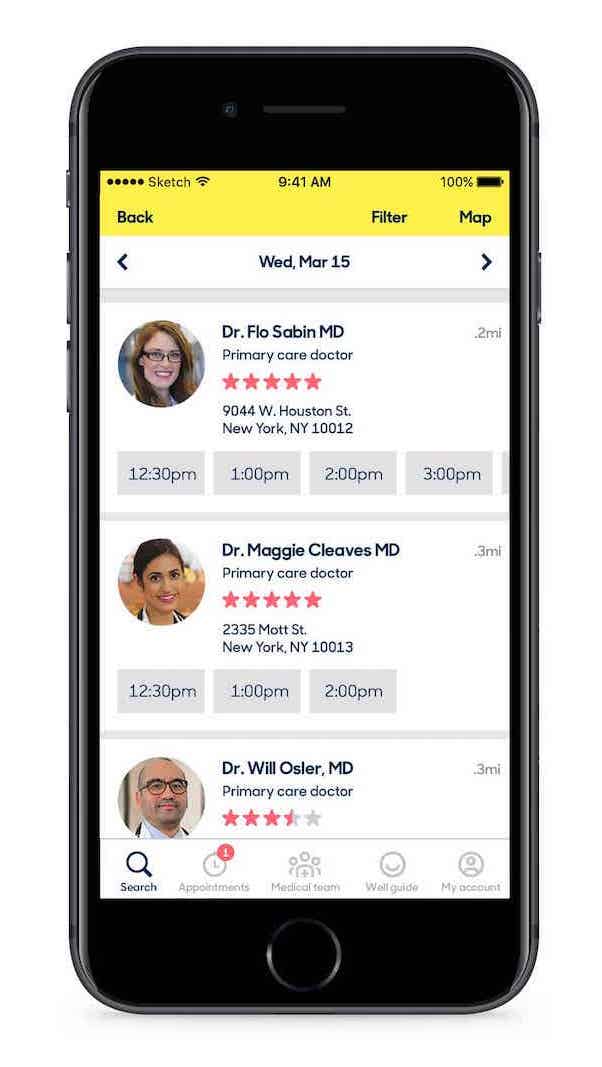Maybe you’re moving to a different city or fresh out of college. Perhaps you’re too old to keep going to your pediatrician, or you’ve had enough of your old primary care provider. Whatever the reason, you’ve found yourself hunting for a new primary care provider. Unfortunately, trying to find a new primary care provider can feel a lot like dating. It’s stressful, time-consuming, and you might have to try out a couple of different ones to get a doctor that sticks.

For those unfamiliar with what a primary care provider (PCP) is, a PCP is a health professional who provides general medical care. They are typically the first step in any medical diagnosis, providing general care or specialist referrals. There are multiple types of primary care providers, including internists, family doctors, nurse practitioners, physician assistants, osteopathic physicians, and more. Each type of PCP offers a different level/type of care. For example, if you’re a pretty healthy person, a nurse practitioner as your PCP might be fine. However, if you are juggling multiple conditions, you may want an internist as your PCP. Ultimately, picking a primary care provider comes down to what you want and need.
Step 1: Ask yourself what you are looking for in a PCP
When looking for a new primary care provider, the first step should be to ask yourself what you are looking for. There are several types of PCPs that specialize in different sectors of medicine or offer different approaches to your health. Therefore, it's imperative to know what you personally prioritize in a provider. Some questions to get you thinking would be:

Are you a patient who needs a higher level of care? Will you need referrals to specialists often?
For example, an internist may be better than a family doctor for someone with complicated health problems since they tend to have a deeper knowledge of more complex medical issues. However, a family doctor is more experienced in general medicine than a physician assistant and nurse practitioner.
What stage of life are you in? Do you have children?
If you are someone with children, a family doctor could be convenient for you because you’ll be able to visit the same doctor as your kids. Additionally, your kids can stay with this doctor for the rest of their lives instead of transitioning from a pediatrician to a PCP.
Do you want someone of a particular demographic?
It’s important to keep in mind that you will visit your PCP for everything. This means embarrassing and gross things too. So, it’s important to pick someone you are completely comfortable with. That could mean picking someone closer to your age or someone with the same gender as you.
Do you want to be a part of a larger hospital organization or a private practice?
Larger hospital organizations like Kaiser Permanente or Mass General will have many different types of doctors within their system. Having a PCP as part of these groups will allow you to easily and quickly get referrals to specialists within the same organization, and you will likely see more communication between specialists and PCPs. However, a private practice may seem more personal. They may spend more time with their patients, or it may be easier to get an appointment. Additionally, their referrals might be of higher quality because they don’t have to refer you to someone within the same organization.

Step 2: Gather a list of providers
Once you know what you want, narrowing your search will be much easier. You can start by asking around for recommendations or by searching the internet with keywords like “female primary care physicians near me” or “family doctor in Boston”. The more specific you get, the fewer results you’ll have to sift through. Another option would be using a free service like ZocDoc, Healthgrades, or Vitals. These are websites and apps that are designed to find PCPs for you. Finally, compile a list of possible providers and begin researching.
Step 3: Start researching each provider
First, see what providers take your insurance.
You can typically find this out on the clinic’s website or by calling your insurance company. It’s probably not ideal to go to a provider that doesn’t accept your insurance, so it’s best to cross those providers off your list before digging any further.
Second, it’s important to see which providers are currently taking new patients.
Some providers may not be accepting new patients. You can find this information usually on their website. If not, try calling the clinic to find out.

Check the ratings and reviews of each provider.
You can find these reviews on websites like the ones mentioned above or by searching their names online. Their patients probably have helpful opinions and feedback. Bad reviews can help you spot red flags.
Read the provider’s bio.
Normally, providers will have short biographies on the clinic’s website. You should be able to find their bio on their clinic’s website or by just searching their name online. You can see their credentials, their demographics, and if they have experience in a particular field that could interest you.
Check if their location is convenient.
You probably don’t want to trek super far every time you see your provider, especially if you aren’t feeling well. Things like parking, transportation options, and distance can make a difference.
Step 4: Try out providers on your list

Once you’ve shortened your list of potential PCPs, call them each in the order of your favorite to least favorite. See when you can get the earliest appointment and try them out. Your PCP will be your right-hand person in your medical journey, so it’s important to find the right one. Don’t settle for a PCP that you don’t like that much. Primary care providers will not be offended if you choose a different provider. They want a good relationship just as much as you do.
Important things to consider when visiting a PCP for the first time:
- Was it difficult to get an appointment? Were they responsive? Did they answer your calls or emails? Keep in mind a super busy clinic could have difficulty squeezing you in for more urgent appointments.
- How are the dynamics of the clinic? Are they slow or disorganized? Are the employees rude or polite? Clinic dynamics affect your visit, so there’s no shame in paying attention to them.
- How is the provider? Do you feel comfortable with them? Are they really listening to you, or do you feel like they are rushing you? Are they asking thoughtful questions? Are they being condescending, or do they seem genuine? The aura you get from your provider is crucial. You can probably tell pretty quickly if this relationship will work out.
After visiting your PCP a couple of times, don’t be afraid to choose a different one. Go back to your list and try some more clinics. Primary care physicians are the base foundation of your medical care, and without a good one who you can trust, getting the care you need will be a lot more difficult. You want someone willing to advocate for you, especially if you’re struggling with a chronic illness. Your healthcare should be a priority to your PCP and not a nuisance. There are millions of wonderful providers out there, and it’s up to you to find the best one for your unique needs.

Next Steps
After finding a PCP that works for you, try to get the most out of each visit. There are several ways to make your appointments smoother and more efficient, including writing questions down ahead of time, organizing your records, or using a health app like Guava. Guava can organize your labs and records, track your symptoms, and find correlations in your health to help your doctor find diagnoses faster. The more your PCP is informed of your health, the better they can help you get the care you need.






